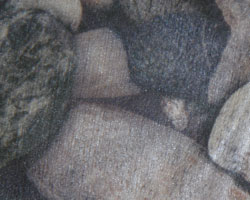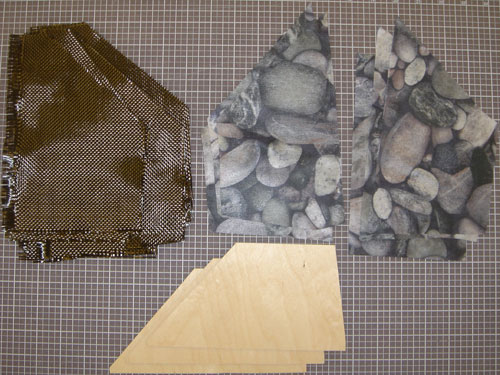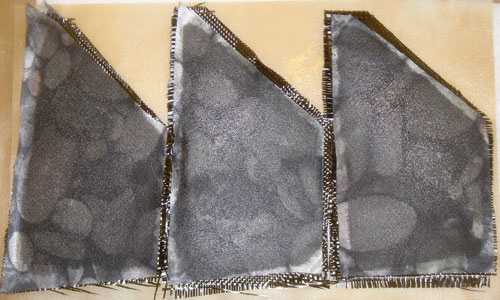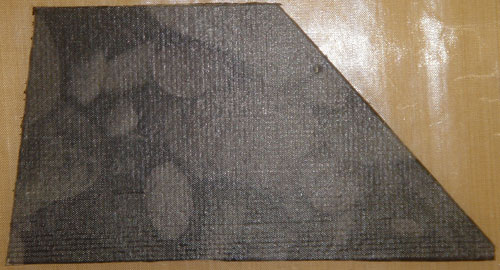Cool Blue Reason
In Summer 2007, FibreGlast introduced Chromaveil, a composite cloth material with photographic patterns built into it. At first I thought of doing a wood-grain rocket, but that's been done before and when I noticed the "Wet When Dry" pattern, I knew that was more appropriate for the desert.
The name "Cool Blue Reason" came later, when the material arrived and it made me me think of the Cake song by the same name.
This rocket has been abandoned.
The Pictures
The Design
This is a standard 3FNC rocket. Most of my projects are large and complex, so I wanted to build something quick and simple and be able to "just fly it." Given the parts that I had on hand, I decided to build it based on 3" airframe tubing and a 54mm motor mount. (I plan to fly it in a K550, but the MMT can accomodate a K700 as well.)
The Fins
The fins are quite standard, just clipped delta with plywood cores and carbon-fiber reinforcement for stiffness. However, I wanted to try a different pattern of Chromaveil skin for the fins and the river stones seemed like they would go well with the water design of the body.
First Try

On the right, you can see a close-up of the river stones cloth material I used to cover the fins. Several things are interesting to note:
It's quite thin and soft,
it has a very tight weave,
it has a matte finish, and
it's not fully opaque.
The latter would turn out to be a big problem for this application as the black from the underlying carbon fiber showed through the cloth and washed out the pattern.
To keep the rocket simple, I decided to use thin plywood cores and a flat lamination in a vacuum press. I was planning to use the fins as they came out of the bag so there was no option for sanding or any other post-lamination work.

Above, the materials are laid out in preparation for laminating the three fins. These fins use 1/8" plywood cores, carbon fiber for stiffness and the Chormaveil for finish. The only trick here is that the Chromaveil has a "top" side so the opposite sides of each fin must be cut as mirror images.

Above you can see the fins laid up, wet out and ready to go into the vacuum press. I was already worried at this point because the epoxy seems to have darkened the color so much as to wash out the pattern. However, I hoped that once the epoxy cured, it would lighten back up.

Above you can see one of the fins out of the bag, fully cured and rough-trimmed. Unfortunately, the black carbon fiber does not make a suitable base for the Chromaveil skin. The carbon fiber fabric also printed through the veil, which I'd expected, but the result was worse than I'd thought.
Second Try
Clearly I needed to use a different surface under the Chromaveil. The surface would need to be smoother than normal lamination cloth and a uniform light color. It also appeared that clear gel coat would be necessary.